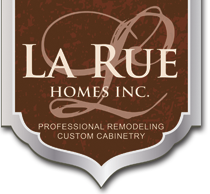Taking the confusion out of buying LED bulbs
Buying LED bulbs can be confusing. When an incandescent bulb burns out all you have know is the wattage of your bulb to replace
it.
LED bulbs require a different set of questions.
Below is some information you might find handy when purchasing a LED bulb
Table lamps, floor lamps, pendants generally use an A-Shape bulb
To make sure you are getting the same brightness as the wattage in your old incandescent bulb, match the “lumens” of the old bulb with the new LED bulb. More than likely the lumens will not be printed on your old bulb so you might find the info below helpful.
- 20w incandescent = 200 lumens
- 25w incandescent = 250 lumens
- 40w = 450 lumens = 6-9W (LED)
- 60w = 800 lumens = 8-12W (LED)
- 75w = 900 lumens to 1110 lumens = 9-13W (LED)
- 100w = 1200 lumens to 1600 lumens = 16-20W (LED)
- 120w = 1500 lumens
- 125w = 2000 lumens
- 150w = 2600 lumens = 25-28W (LED)
Appearance:
Most people like a soft, warm light for your table lamps or decorative lighting. Sometimes on an LED light the appearance of the light is written as a numerical value called color temperature. The table below will give you an idea of how to select the correct color temperature for your lamps.
- Warm white = 2700K (this is a typical incandescent light bulb)
- Neutral white = 3000K (slight less warm, more typical halogen bulb)
- Cool white = 3500K to 4100K
- Very cool white = 5000K – 6000K (more the color of daylight)
A good fact to remember: Indoor spaces lit to lower light levels will typically look and feel better under warm lamps. A space which receives an abundance of sunlight may seem more natural when cooler lamps are installed since their light is closer to high color temperature of natural daylight.
Look at the label:
Both color temperature and lumens are generally printed on the “Lighting Facts” label on LED bulbs.
Dimming:
Not all LED lights are dimmable. Make sure the LED light you purchase is dimming however not all LED lights will dim like your old incandescent light did. Older style residential dimmers (with no neutral) may cause your LED light to flicker.
Dimmable vs Warm Dimming:
If the dimmable LED bulb says it is “warm dimming” than the bulb is usually dimmable on any dimmer and the illumination will not get warmer in color. If you want your LED to dim like your incandescent dimmed, then get one that says it has “warm dimming”.
Best case scenario is to replace your current dimming switch with a LED compatible dimmer.
Recessed can lights: R or BR bulbs
Brightness, Appearance of light and dimming: same as info on A shape bulb
Diameter of bulb:
Make sure the diameter of the LED bulb will fit into your can lights. Check your existing bulbs or reflectors and see if R20, BR30 or BR40 is printed on the bulb. If so the chart below is the diameters for reference:
R20= 2.5″
BR30 = 3.75″
BR40 = 5.0″
Note: Heat and Air Flow in a recessed can light
LED bulbs generate heat in the body of the bulb down toward the base. When LED bulbs are placed in recessed cans meant for an incandescent light, the air flow will be reduced. LED bulbs do not have filaments that burn out but instead have solid state components that can fail because they get too hot.
In a reflector, an LED bulb may not last the rated life listed by the manufacturer but will last longer than your old incandescent reflector.
It is also good to note that a LED light bulb can trip you circuit breaker
The best case scenario would be to replace your current recessed housing with a dedicated LED housing and trim.
Flood lights, spots and accents: Par bulbs
Brightness:
For floodlights, match your existing halogen bulb lumens with LED lumens to get similar brightness.
For spotlights, the “center beam candlepower” also known as CBCP is more accurate value to match.
Light Distribution:
If you are matching directional lighting you can match the light distribution beam angle. Again, more than likely the beam angle is not on your bulb so the chart below may come in handy.
12° to 20° = Spot
25° to 30° = Narrow Flood
35° to 40° = Flood
>45° = Wide Flood
Outdoors:
When purchasing an LED bulb to use outdoors, make sure the bulb is rated for outdoor use
Best LED lightbulbs??
According to “The Sweethome” article on “The Best LED Lightbulb” after researching more than 70 LED bulb options they found that Walmart’s Great Value LED 60 Watt equivalent (10 watts) Dimmable Soft White Bulb hits all the marks that make a great bulb.
Runner up was the GE LED 60W Replacement (11 watts) Soft White Dimmable.
Note: Info from Treehugger; CNET, Pegasus Lighting, EarthLED, Sweethome, TopBulb
